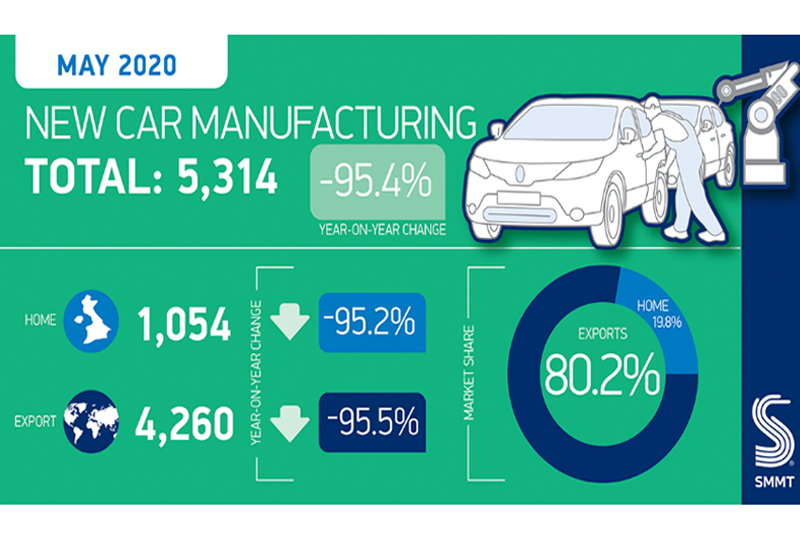
According to figures released by the Society of Motor Manufacturers and Traders (SMMT), UK car manufacturing output fell -95.4% in May with just 5,314 vehicles rolling off production lines.
The performance was said to be a slight improvement on April, when only 197 units were built but with factories still closed or running at reduced capacity it still marked the worst May since 1946.
While some two thirds of the UK’s automotive plants started getting back to business during the month, capacity was said to be severely held back by social distancing requirements and reduced demand, with key global markets only just beginning to reopen and the UK remaining in lockdown. 4,260 cars were exported in May, most into the EU, the US and China, and with English car showrooms not reopening until 1 June, only 1,054 models were built for domestic buyers.

In the first five months, UK factories turned out 324,763 cars, representing a decline of -41.7% on the same period in 2019 and a loss of more than 230,000 units, with the full year outlook now expected to be fewer than one million units.
The news comes as SMMT’s latest member survey reveals the challenges companies have faced as they emerge from the pandemic. While government support schemes have provided a lifeline for many businesses, in particular the Coronavirus Job Retention Scheme, liquidity is reportedly still a major issue for automotive businesses as they seek to ramp up operations, with 70% experiencing challenges in this area. Potentially up to one in six jobs are said to be at risk of redundancy when the furlough scheme comes to an end in November.

Mike Hawes, SMMT Chief Executive, said: “May’s figures are yet more evidence of why the UK industry, like its global rivals, needs dedicated support to drive a successful restart. Government assistance so far has been vital in keeping many businesses afloat, but the job isn’t done. Measures to boost cashflow, including additional and tailored finance schemes, tax relief and business rates deferral would deliver immediate results when liquidity is most acute.
“We have to retain the highly skilled jobs the sector provides but also ensure the business conditions are competitive so we can unlock the investment that will drive long-term recovery – a green recovery – which is inextricably linked the sector’s success.”









